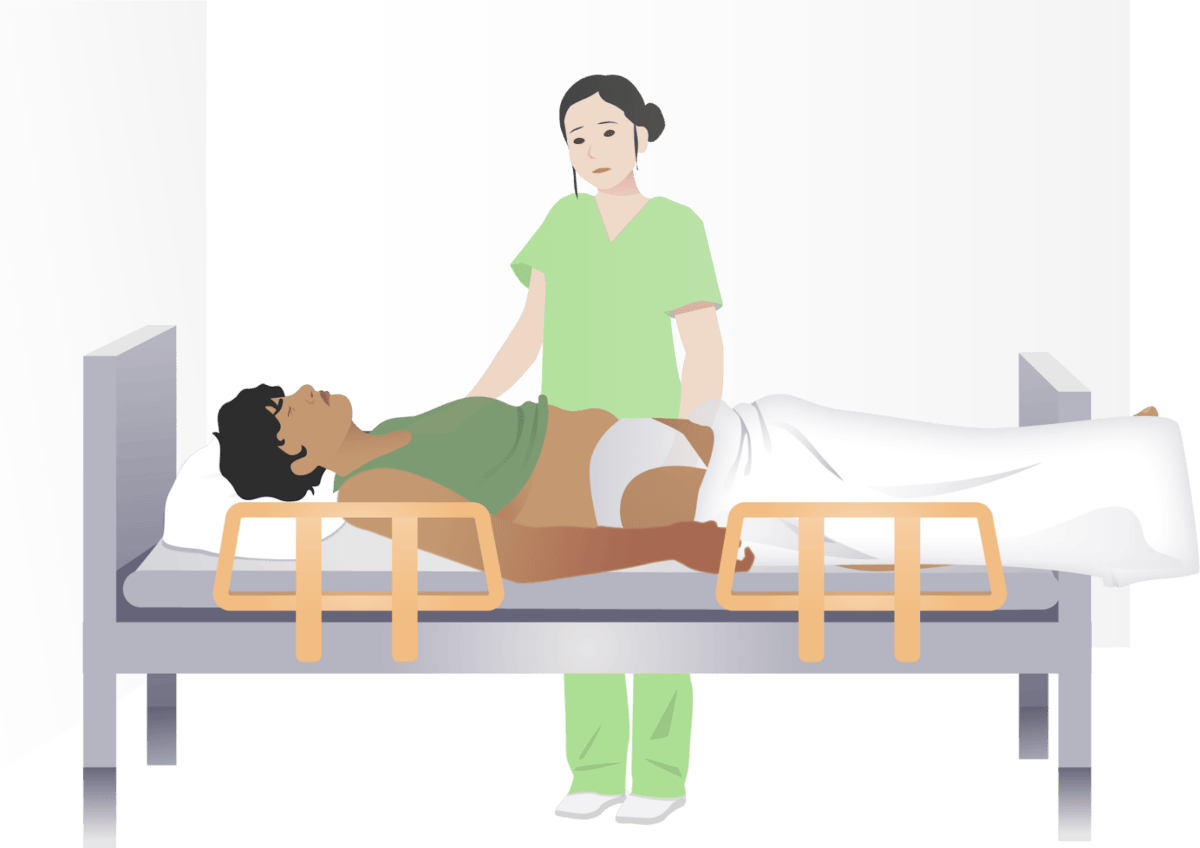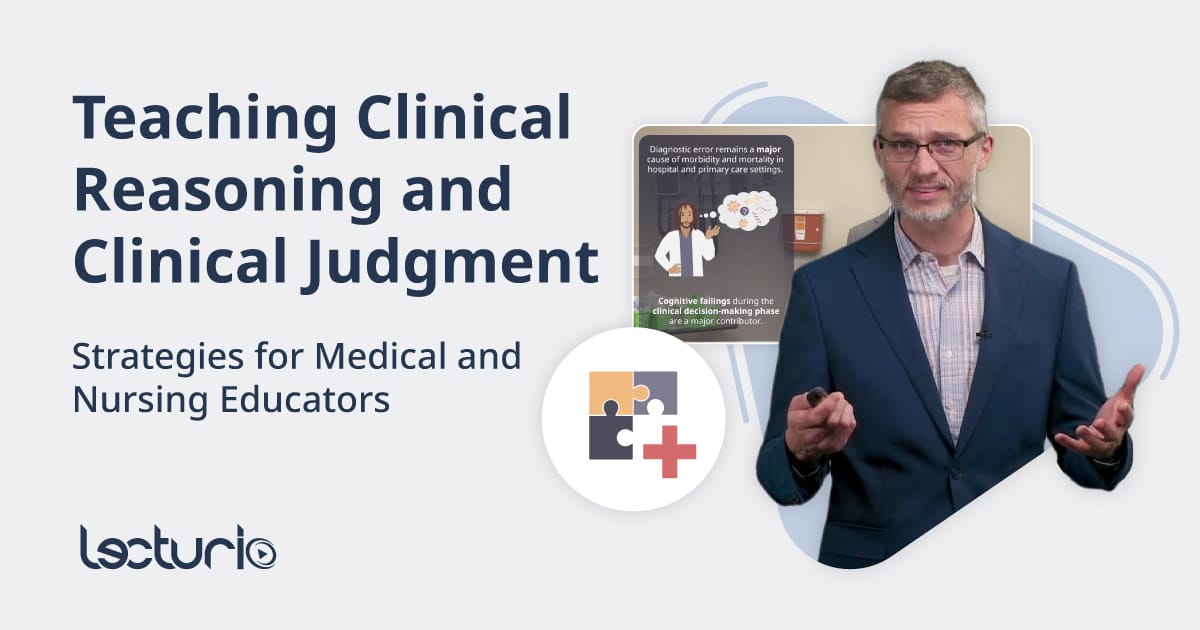Clinical reasoning and clinical judgment are at the heart of effective patient care and medical decision-making, yet they remain some of the most challenging competencies to teach and assess in medical school, physician assistant (PA) programs, and nursing education. While clinical reasoning focuses on the cognitive process of diagnosing and managing patient conditions, clinical judgment encompasses the decision-making and prioritization skills necessary for safe and effective patient care.
How can medical educators, PA instructors, and nursing faculty better equip students with these critical thinking skills?
Why Clinical Reasoning and Clinical Judgment Matter in Medical and Nursing Education
Accurate clinical reasoning in medical education is fundamental to reducing diagnostic errors and improving patient outcomes. Poor clinical reasoning is a leading contributor to diagnostic errors, which affect millions of patients and lead to an estimated 800,000 deaths or permanent disabilities annually in the United States. Recognizing the significance of this skill, the National Academy of Medicine has emphasized the need for improved clinical reasoning education.
Similarly, clinical judgment in nursing education is crucial as it influences patient outcomes by guiding nurses in prioritizing care, responding to changing conditions, and making informed clinical decisions. The National Council of State Boards of Nursing (NCSBN) has integrated clinical judgment assessment into the NCLEX, emphasizing its importance in nursing education.
Despite their importance, many medical, nursing, and PA programs struggle to integrate structured clinical reasoning and clinical judgment assessment into their curricula. Traditional training focuses on competency—building a broad knowledge base, learning physical examination skills, and synthesizing information to generate diagnoses or make care decisions. However, competency alone is insufficient. Educators must also train students to recognize when to slow down, seek guidance, and refine their reasoning and judgment processes. Without this, students may struggle to apply their knowledge effectively in real-world scenarios.
Teaching Clinical Reasoning: Making Thought Processes Visible
One of the key challenges in teaching clinical reasoning is that much of the process occurs subconsciously. To help students develop this skill, educators must make the thinking process explicit. Here are some effective strategies:
- Think Out Loud: Encourage students to verbalize their clinical decision-making processes during case discussions. This practice allows educators to assess reasoning skills and provide immediate feedback.
- Positive Role Modeling: Demonstrate expert clinical reasoning by explicitly outlining the steps taken when evaluating a case. Effective clinical teachers exhibit not only medical knowledge but also humanistic qualities such as empathy and patient-centered care.
- Use Teaching Frameworks: Models like SNAPPS (Summarize, Narrow, Analyze, Probe, Plan, and Select) provide structured approaches that enhance case-based learning and active engagement.
- Integrate Deliberate Practice: Exposure to realistic cases (e.g., OSCEs) with guided feedback helps reinforce clinical reasoning skills. Repeated, deliberate practice strengthens students’ ability to recognize patterns and make sound judgments.
- Demystify the Process: Teach students that clinical reasoning follows an evidence-based approach, rather than relying on intuition. Encourage students to build illness scripts—mental models that categorize diseases based on clinical findings, risk factors, and pathophysiology.

How to Teach Clinical Judgment in Nursing Education: Effective Strategies
Nursing faculty face a similar challenge when teaching clinical judgment, which involves critical thinking, prioritization, and real-time decision-making in patient care.Effective teaching strategies include:
- Tanner’s Model of Clinical Judgment: This framework breaks down the decision-making process into four key steps:
- Noticing – Recognizing cues and identifying abnormalities.
- Interpreting – Making sense of the data to formulate nursing interventions.
- Responding – Taking action based on clinical findings and prioritizing care.
- Reflecting – Evaluating the effectiveness of decisions and learning from experience.
- Simulation-Based Learning: Skill assessments such as Objective Structured Clinical Examinations (OSCEs) and unfolding case studies allow students to practice decision-making in a controlled environment.
- Reflective Writing: Encourages metacognition by having students analyze their decision-making processes and recognize cognitive biases.
- Concept Mapping: Helps students visually organize patient information and understand relationships between symptoms, diagnoses, and treatments.
- Flipped Classroom Approaches: Engages students in active learning by reviewing content before class and applying concepts through interactive discussions and case-based problem-solving.
Overcoming Barriers to Teaching Clinical Reasoning and Clinical Judgment
Many medical, PA, and nursing programs face obstacles when integrating clinical reasoning and judgment assessment into their curricula. The most common barriers include:
- Lack of Curricular Time: Clinical reasoning and judgment training are often overshadowed by other educational priorities.
- Limited Faculty Expertise: Many educators were not formally trained in teaching these cognitive processes and may require faculty development.
- Absence of Standardized Assessment Methods: Faculty and programs may lack information about objective tools to evaluate student progress and provide actionable feedback.
To address these challenges, medical and nursing programs should prioritize faculty development initiatives, integrate clinical reasoning and judgment early in the curriculum, and leverage technology-enhanced learning tools.
Leveraging Technology: NEJM Healer and Simulation-Based Training

One innovative approach to enhancing clinical reasoning and judgment education is the use of technology-based virtual patient case simulation platforms such as NEJM Healer and simulation-based training. These tools provide structured, interactive environments where students can practice clinical reasoning and judgment in realistic scenarios.
Key benefits include:
- Structured Case-Based Learning: Students gather patient data, generate problem representations, create differential diagnoses, and develop management plans.
- Immediate, Detailed Feedback: The platform offers expert insights through text, audio, and interactive graphics, helping learners refine their reasoning and judgment skills.
- Standardized Assessments: Educators receive performance data that help track student progress and identify those needing additional support.
- Immersive Real-World Scenarios: Cases cover a range of core diseases and clinical situations, allowing students to apply reasoning and judgment skills in varied contexts.
By incorporating technology-driven tools into clinical training, educators can provide a scalable, standardized, and engaging approach to teaching and assessing these critical skills.
Conclusion
Clinical reasoning and clinical judgment are cornerstones of effective medical and nursing practice, yet traditional education methods often fail to teach them explicitly. By using structured teaching strategies, emphasizing metacognition, and leveraging technology-driven tools, faculty can empower students to develop expert-level reasoning and judgment skills. As healthcare education evolves, integrating best practices in teaching clinical reasoning and clinical judgment will be essential to training the next generation of highly competent and confident clinicians.
Improve Clinical Reasoning and Judgment Training at Your Institution – Explore NEJM Healer & Simulation-Based Learning Today! Explore the capabilities of NEJM Healer and simulation-based learning to transform the way students learn and apply critical thinking skills in patient care.

